About this detail of the Tiger
There was an air vent in the firewall of the Tiger 1. It connected the crew compartment to the engine compartment. I believe it was used to pass hot air to the crew in cold weather; the vehicle had no heater for the crew.
According to the Tigerfibel [2] , you should not open this vent when the crew hatches are closed. Otherwise, "engine air" will enter the crew compartment. I believe the problem here was the danger of carbon monoxide poisoning in a sealed vehicle.
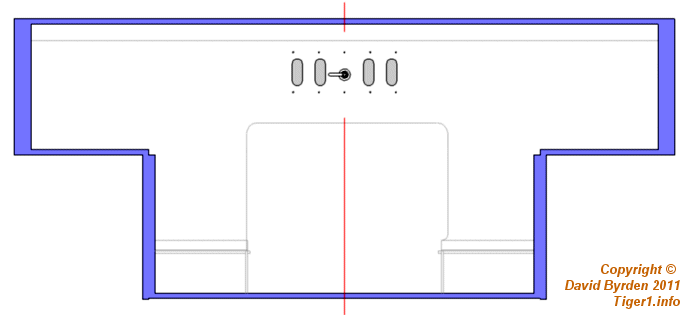
Several different designs of vent were used. This diagram shows the original design, seen from the front side. This design with 4 holes was used only in vehicles with a HL 210 engine, that is, the first 250 vehicles [1] .
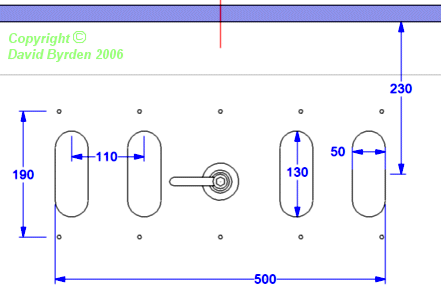
Here are the dimensions of the vent holes [1] . There was a small lever between them, located exactly on the center line of the tank. This lever opened and closed the vent. Its two positions were labelled 'Auf' and 'Zu'. In the two surviving museum examples, 'Auf' was at the right side of the tank and the lever turned underhand; but those orientations could have been different in other tanks.
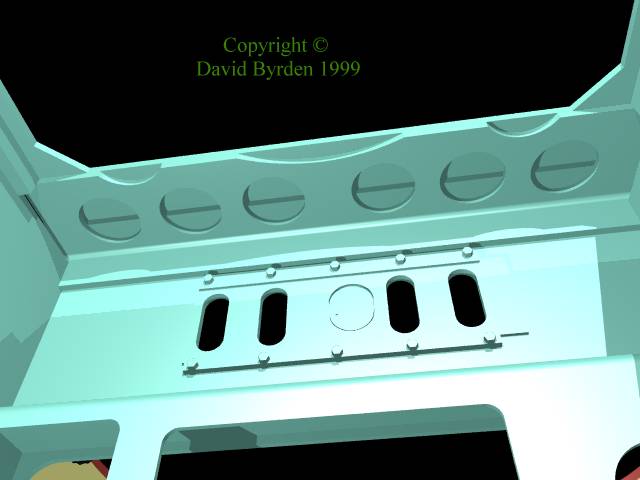
This is a model of the vent mechanism on the rear side of the firewall.
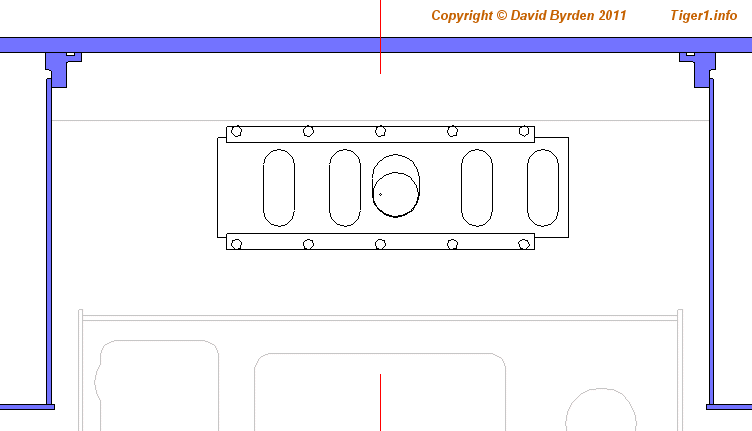
The lever was attached to a circular cam, which caused a panel to slide between two guide rails. In the open position, holes in the panel would align with holes in the firewall.
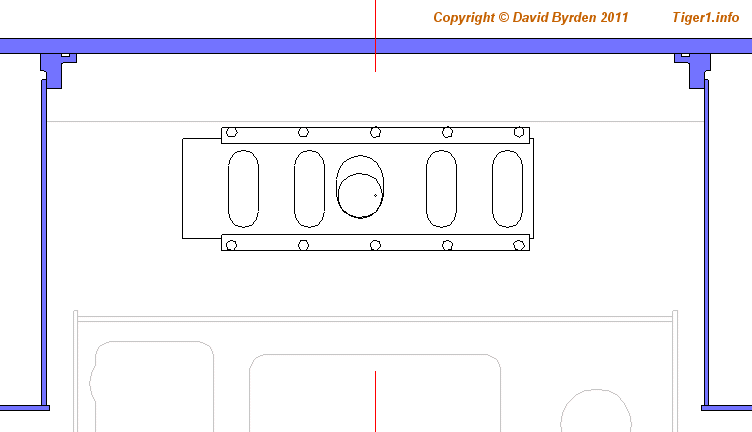
Below is part of a sketch from the Tigerfibel [2, see page 20] that explains the controls on the firewall. The black lettering was present on the tank, but the red numbers are in the diagram only.
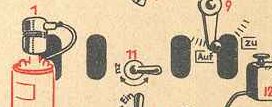
The markings 'Auf' and 'Zu' have not been preserved in the Bovington museum's vehicle.
[1] Survey of Tiger 250122, at Bovington museum, by David Byrden